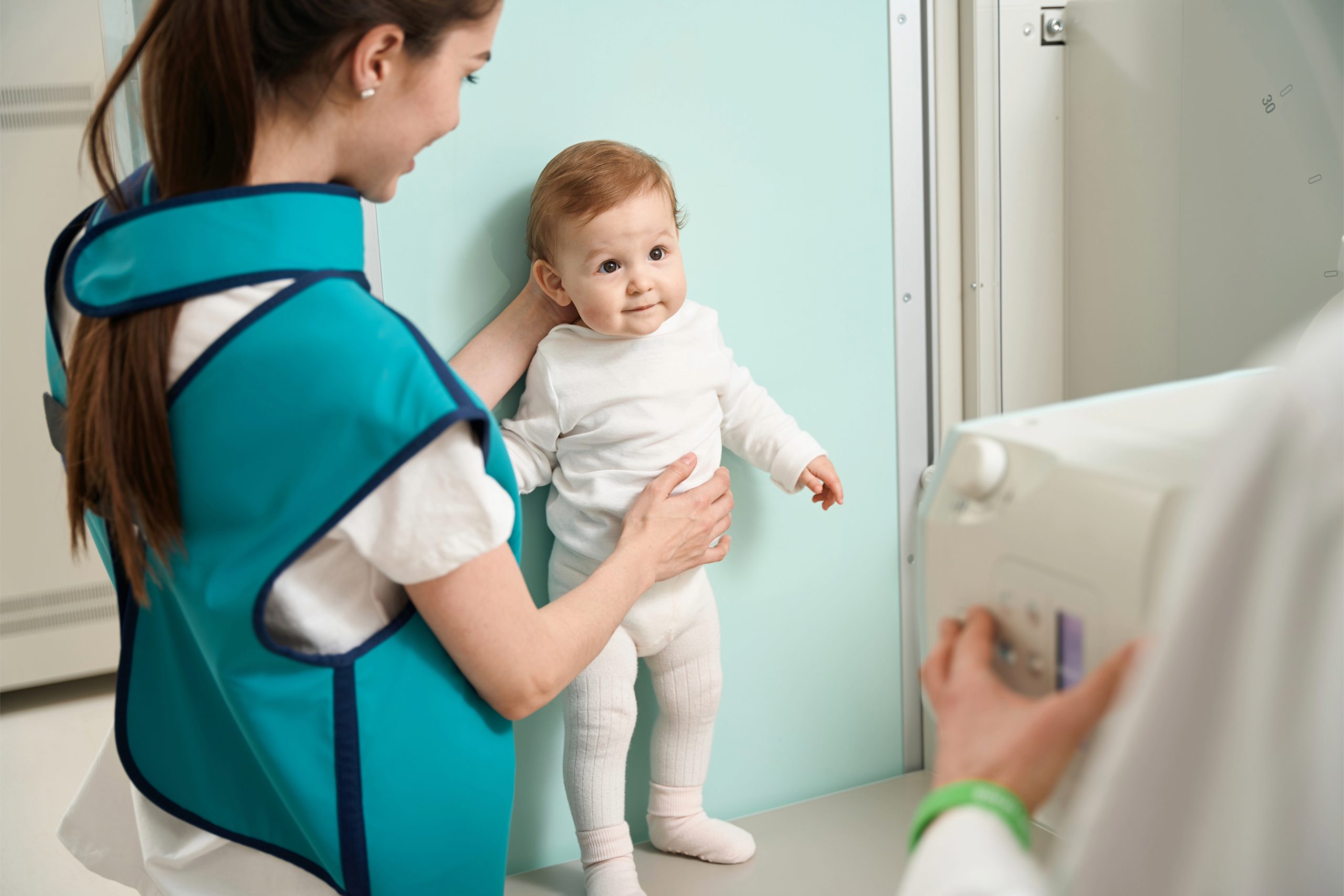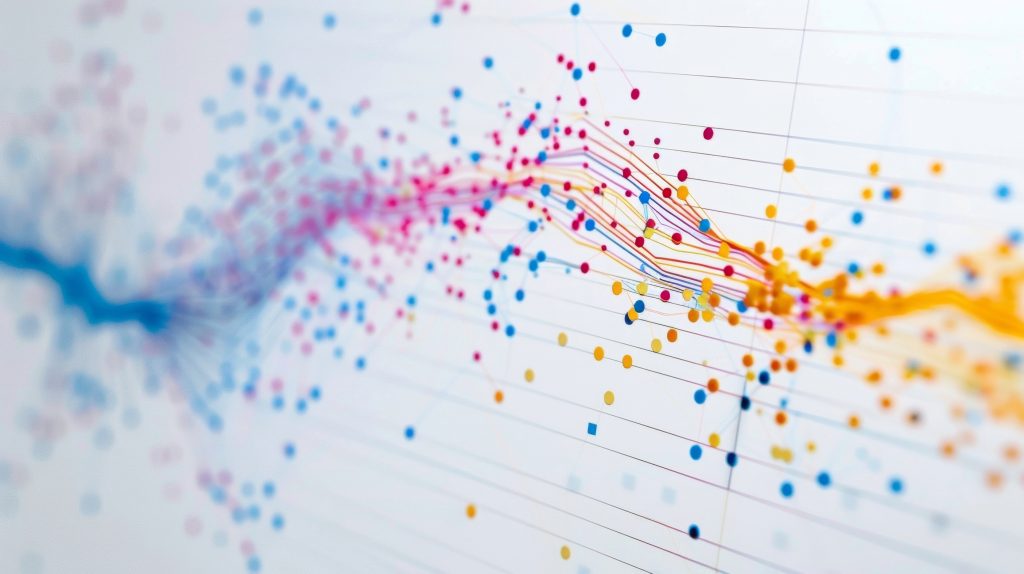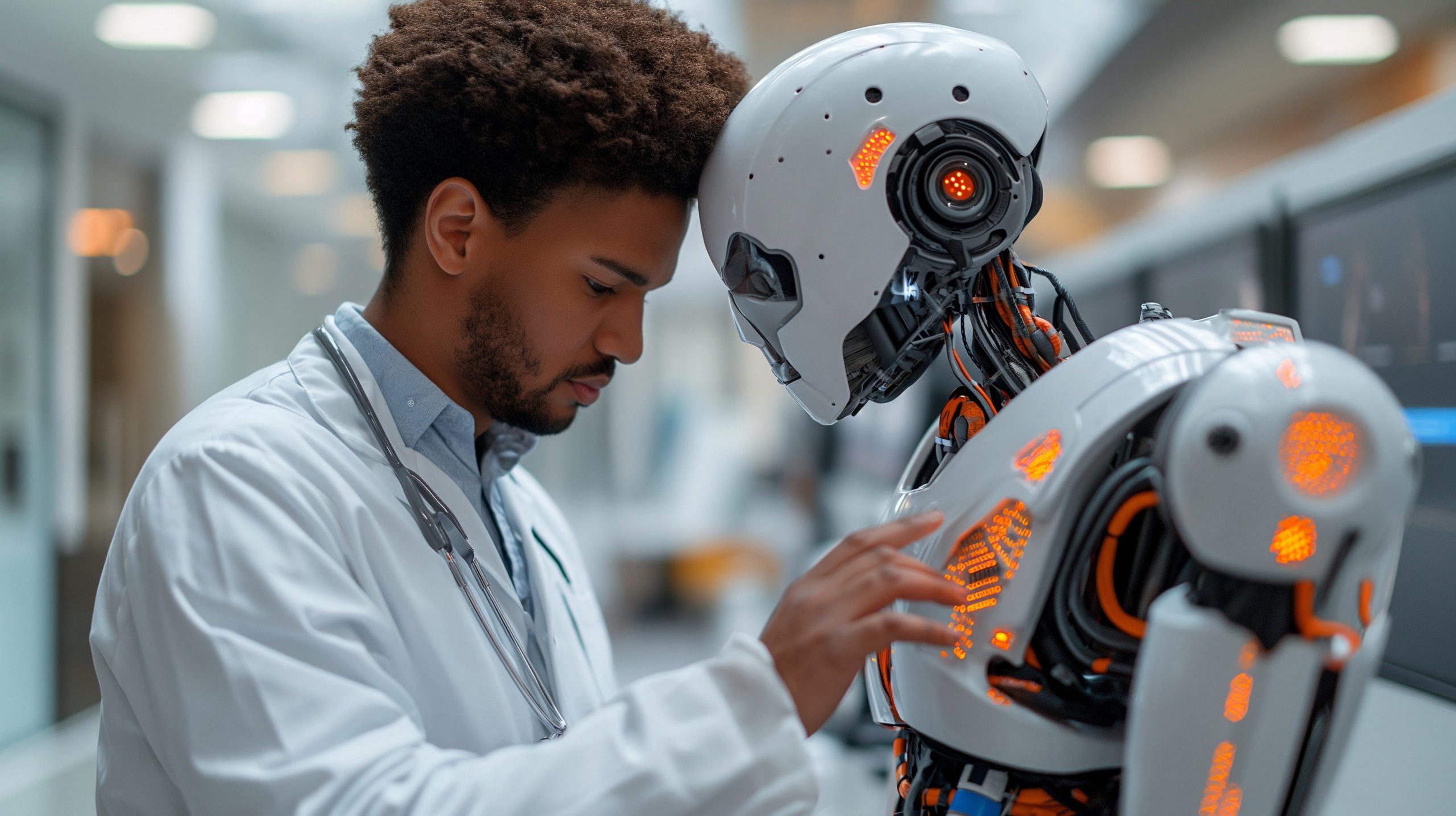
AI in Pediatrics: Addressing Gaps and Transforming Radiology with Safety and Precision
Artificial Intelligence (AI) is revolutionizing the field of radiology, providing powerful tools that enhance diagnostic accuracy, streamline workflows, and improve patient outcomes. However, while AI has made significant strides in adult care, pediatric radiology has faced unique challenges, leaving a gap in the development and application of AI tools specifically for children. The 2023 white paper “Use of Artificial Intelligence in Radiology: Impact on Pediatric Patients,” by Sammer et. al, published by the American College of Radiology (ACR) Pediatric AI Workgroup, highlights these challenges and the potential benefits AI offers in transforming pediatric radiology. This article explores the key insights from the paper, discusses the benefits of pediatric AI, and considers how AI can be effectively integrated into pediatric radiology to enhance safety and precision for our youngest patients.
The Current State of AI in Pediatric Radiology
AI has rapidly become integral to modern radiology, particularly in adult care, where it is widely used for image analysis, decision support, and even predicting patient outcomes. However, pediatric radiology presents unique challenges that has yet to be fully addressed. The ACR white paper reveals that only a small fraction of AI tools approved by the FDA have been validated for pediatric use, as most AI algorithms are developed and trained on adult datasets.
This disparity raises significant concerns for implementation by health systems. Children are not just “small adults”; they have distinct anatomical, physiological, and disease characteristics. Artificial intelligence tools designed for adult patients may not perform effectively—or safely—when applied to pediatric cases. For example, an AI model trained on adult data might misinterpret pediatric images due to differences in bone development, tissue density, and disease presentation.
The Benefits of Pediatric AI in Radiology
Despite these challenges, the integration of AI into pediatric radiology holds tremendous potential to transform care and diagnose pediatric diseases. Here are some key benefits and use cases:
Enhancing Diagnostic Accuracy
Using AI has the potential to help improve diagnostic accuracy significantly in pediatric radiology. By leveraging machine learning (ML) and deep learning algorithms, AI can analyze complex data points, identify patterns, and detect anomalies that may be difficult for even the most experienced radiologists to spot. This enhanced diagnostic precision is particularly valuable in pediatric care, where early detection of conditions like congenital heart defects, skeletal dysplasias, or pediatric cancers can lead to better outcomes.
Optimizing Radiation Exposure
One of the most critical concerns in pediatric radiology is minimizing radiation exposure. Children’s developing tissues are more sensitive to radiation, and they have a longer lifetime during which radiation-induced effects could manifest. AI can play a pivotal role in optimizing radiation doses, ensuring that the lowest possible dose is used without compromising image quality. Imaging studies have shown that AI can reduce radiation exposure by up to 70%, making imaging safer for pediatric patients while still providing the necessary diagnostic clarity.
Reducing the Need for Repeat Imaging
Repeat imaging is a common issue in pediatric medicine due to poor image quality or incomplete scans, leading to additional radiation exposure and increased stress for young patients. AI helps mitigate this risk by improving the accuracy and efficiency of the initial imaging process. By ensuring that the first scan is of high quality and diagnostically useful, AI reduces the likelihood of needing additional scans, protecting children from unnecessary exposure and streamlining the diagnostic process.
Supporting Personalized Medicine in Children’s Health
Pediatric care often requires personalized treatment plans tailored to the unique needs of each child. AI can analyze individual patient data, such as age, size, and specific health conditions, to develop customized imaging protocols and treatment strategies. This personalized approach helps reduce the frequency of imaging required and ensures that each child receives the most effective care with the least amount of risk.
Advancing Predictive Analytics
AI’s potential use in predictive analytics could revolutionize how pediatric care is delivered. By analyzing large datasets, prediction models can identify trends and anticipate the likelihood of certain conditions developing in pediatric patients. This capability allows for earlier intervention and more proactive treatment approaches, which can reduce the need for frequent imaging and lead to better long-term outcomes.


Challenges in Developing Pediatric Artificial Intelligence
While the benefits of AI in pediatric radiology are clear, developing these tools is not without its challenges. The ACR identifies several key barriers:
- Data Availability: Pediatric imaging datasets are less abundant than adult datasets, making it difficult to train AI models effectively. The lack of labeled pediatric data further complicates the development of accurate and reliable AI algorithms.
- Regulatory Hurdles: Pediatric patients are considered a protected population, subject to stricter ethical and regulatory standards. This increases the complexity of conducting research and obtaining approval for pediatric AI tools.
- Economic Disincentives: The economic model for AI development often prioritizes adult applications due to higher patient volumes and reimbursement rates. This creates a financial disincentive for companies to invest in pediatric-specific AI tools.
- Generalization of Adult AI: Attempting to generalize AI and ML models designed for adults to pediatric patients can lead to significant errors. The paper cites examples where AI algorithms that performed well in adults failed to deliver accurate results when applied to children, underscoring the need for pediatric-specific validation.
Ethical and Regulatory Considerations in Pediatric Applications
The use of artificial intelligence and machine learning in pediatric radiology also raises important ethical and regulatory questions. The white paper calls for greater transparency in AI development, particularly regarding the datasets used to train and validate algorithms. Healthcare providers need access to clear information about whether AI tools are suitable for pediatric use and the specific populations they were designed to serve.
Moreover, the paper suggests that regulatory bodies should establish clear guidelines for the ongoing monitoring of AI performance in clinical practice. This is especially important in pediatrics, where changes in patient demographics, such as age or the introduction of new treatment protocols, can affect AI model performance over time.
Transforming Pediatric Radiology: Moving Forward with AI
The ACR Pediatric AI Workgroup offers several recommendations to advance AI in pediatrics:
- Inclusion of Pediatric Data: AI models intended for use in pediatrics should be developed using pediatric-specific datasets. This will ensure that the algorithms are trained on healthcare data that accurately reflects the population they are meant to serve.
- Collaboration Across Sectors: The development of pediatric AI requires a collaborative approach between healthcare providers, developers, and regulatory bodies. By working together, these stakeholders can ensure that AI tools are designed with pediatric health care needs in mind and meet the highest standards of safety and efficacy.
- Economic Incentives: To encourage the development of pediatric AI tools, there must be economic incentives that make it financially viable for companies to invest in this area. This could include reimbursement models that recognize the value of AI in improving pediatric healthcare.
- Public Transparency and Education: The white paper advocates for public access to information about AI tools, including details about the populations they were developed for and their performance in different demographic groups to address inequity. This transparency will empower healthcare providers to make informed decisions about AI use in pediatric care.
- Ongoing Monitoring and Adaptation: Intelligence-based tools should be continuously monitored in real-world clinical settings to ensure they maintain their effectiveness over time. This is particularly important in pediatrics, where patient characteristics can change rapidly as children grow and develop.

The Future of Pediatric Radiology with AI and Machine Learning
AI is poised to transform pediatric radiology, offering the potential to enhance diagnostic accuracy, reduce radiation exposure, and improve patient outcomes. However, challenges remain, and realizing this potential requires a concerted effort to develop AI tools specifically for pediatric use, backed by robust data, ethical oversight, and economic support. By addressing the unique challenges of pediatric radiology, we can ensure that AI becomes a powerful tool in the hands of clinicians, helping to deliver safer, more effective care to our youngest patients.
As the healthcare community moves forward, it is essential to prioritize the development and implementation of artificial intelligence in pediatrics. By doing so, we can bridge the current gaps in AI technology and provide equitable, high-quality care for all children.
Discover the Power of AI with MedMinded
At MedMinded, we believe in harnessing the power of AI to transform pediatric care. Our platform is dedicated to bringing the latest AI-driven innovations to healthcare professionals, ensuring that they have the tools and insights needed to provide the best possible care for their patients.
Join us on the journey of exploring AI through natural language to enhance clinical care by augmenting human intelligence. Stay informed with the latest developments, explore how AI can be integrated into your practice, and become part of a community committed to advancing pediatric health. Together, we can create a future where every child receives the safest, most precise, and effective care.
Discover more at MedMinded and see how using artificial intelligence tools can elevate your practice and improve outcomes for your young patients.
You May Also Like
How AI in Healthcare is Enhancing Empathy and Efficiency
Discover how artificial intelligence is used in healthcare to enhance empathy, reduce administrative
Decision Fatigue in Healthcare: How AI Clinical Decision Support (CDS) Tools Can Help
Discover how AI-powered CDS tools can combat decision fatigue in healthcare. Learn about the causes
Building Trust in AI: The Importance of Explainable AI in Healthcare
Discover the importance of Explainable AI (XAI) in healthcare and how it fosters transparency and tr


